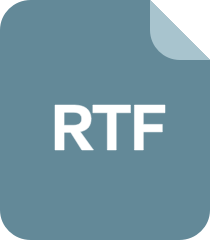
EPA Positive Matrix
Factorization (PMF) 5.0
Fundamentals and
User Guide
R E S E A R C H A N D D E V E L O P M E N T


EPA/600/R-14/108
September 2014
www.epa.gov
EPA Positive Matrix
Factorization (PMF) 5.0
Fundamentals and
User Guide
Gary Norris, Rachelle Duvall
U.S. Environmental Protection Agency
National Exposure Research Laboratory
Research Triangle Park, NC 27711
Steve Brown, Song Bai
Sonoma Technology, Inc.
Petaluma, CA 94954
U.S. Environmental Protection Agency
Office of Research and Development
Washington, DC 20460
Notice: Although this work was reviewed by EPA and approved for
publication, it may not necessarily reflect official Agency policy. Mention of
trade names and commercial products does not constitute endorsement or
recommendation for use.

U.S. Environmental Protection Agency EPA PMF 5.0 User Guide
ii
Disclaimer
EPA through its Office of Research and Development funded and managed the research and
development described here under contract 68-W-04-005 to Lockheed Martin and EP-D-09-097
to Sonoma Technology, Inc. The User Guide has been subjected to Agency review and is
cleared for official distribution by the EPA. Mention of trade names or commercial products
does not constitute endorsement or recommendation for use.
This User Guide is for the EPA PMF 5.0 program and the disclaimer for the software is shown
below.
The United States Environmental Protection Agency through its Office of Research and
Development funded and collaborated in the research described here under Contract Number
EP-D-09-097 to Sonoma Technology, Inc.
Portions of the code are Copyright ©2005-2014 ExoAnalytics Inc. and Copyright ©2007-2014
Bytescout.
Acknowledgments
The Multilinear Engine is the underlying program used to solve the PMF problem in EPA PMF
and version me2gfP4_1345c4 has been developed by Pentti Paatero at the University of
Helsinki and Shelly Eberly at Geometric Tools (http://www.geometrictools.com/). Shelly Eberly,
Pentti Paatero, Ram Vedantham, Jeff Prouty, Jay Turner, and Teri Conner have contributed to
the development of this and prior versions of EPA PMF. EPA would like to thank EPA PMF
Peer Reviewers for their comments on the software and user guide, and for providing an
improved list of PMF references.

U.S. Environmental Protection Agency EPA PMF 5.0 User Guide
iii
Table of Contents
1. INTRODUCTION ....................................................................................................................... 1
1.1 Model Overview .................................................................................................................. 1
1.2 Multilinear Engine ................................................................................................................ 3
1.3 Comparison to EPA PMF 3.0 and Other Methods .............................................................. 5
2. USES OF PMF .......................................................................................................................... 6
3. INSTALLING EPA PMF 5.0 .................................................................................................... 11
4. GLOBAL FEATURES ............................................................................................................. 12
5. GETTING STARTED ............................................................................................................... 14
5.1 Input Files .......................................................................................................................... 14
5.2 Output Files ....................................................................................................................... 17
5.3 Configuration Files ............................................................................................................ 18
5.4 Suggested Order of Operations ........................................................................................ 18
5.5 Analyze Input Data ............................................................................................................ 19
5.5.1 Concentration/Uncertainty ................................................................................... 20
5.5.2 Concentration Scatter Plots ................................................................................. 25
5.5.3 Concentration Time Series .................................................................................. 26
5.5.4 Data Exceptions ................................................................................................... 27
5.6 Base Model Runs .............................................................................................................. 27
5.6.1 Initiating a Base Run ............................................................................................ 28
5.6.2 Base Model Run Summary .................................................................................. 29
5.6.3 Base Model Results ............................................................................................. 31
5.6.4 Factor Names on Base Model Runs Screen ....................................................... 40
5.7 Base Model Displacement Error Estimation ..................................................................... 42
5.8 Base Model BS Error Estimation ...................................................................................... 43
5.8.1 Summary of BS Runs........................................................................................... 45
5.8.2 Base Bootstrap Box Plots .................................................................................... 46
5.9 Base Model BS-DISP Error Estimation ............................................................................. 48
5.10 Interpreting Error Estimate Results ................................................................................. 50
6. ROTATIONAL TOOLS ............................................................................................................ 52
6.1 Fpeak Model Run Specification ........................................................................................ 52
6.1.1 Fpeak Results ...................................................................................................... 53
6.1.2 Evaluating Fpeak Results .................................................................................... 57
6.2 Constrained Model Operation ........................................................................................... 58
6.2.1 Constrained Model Run Specification .................................................................. 58
6.2.2 Constrained Profiles/Contribution Results ........................................................... 65
6.2.3 Evaluating Constraints Results ............................................................................ 68
7. TROUBLESHOOTING ............................................................................................................ 70





















